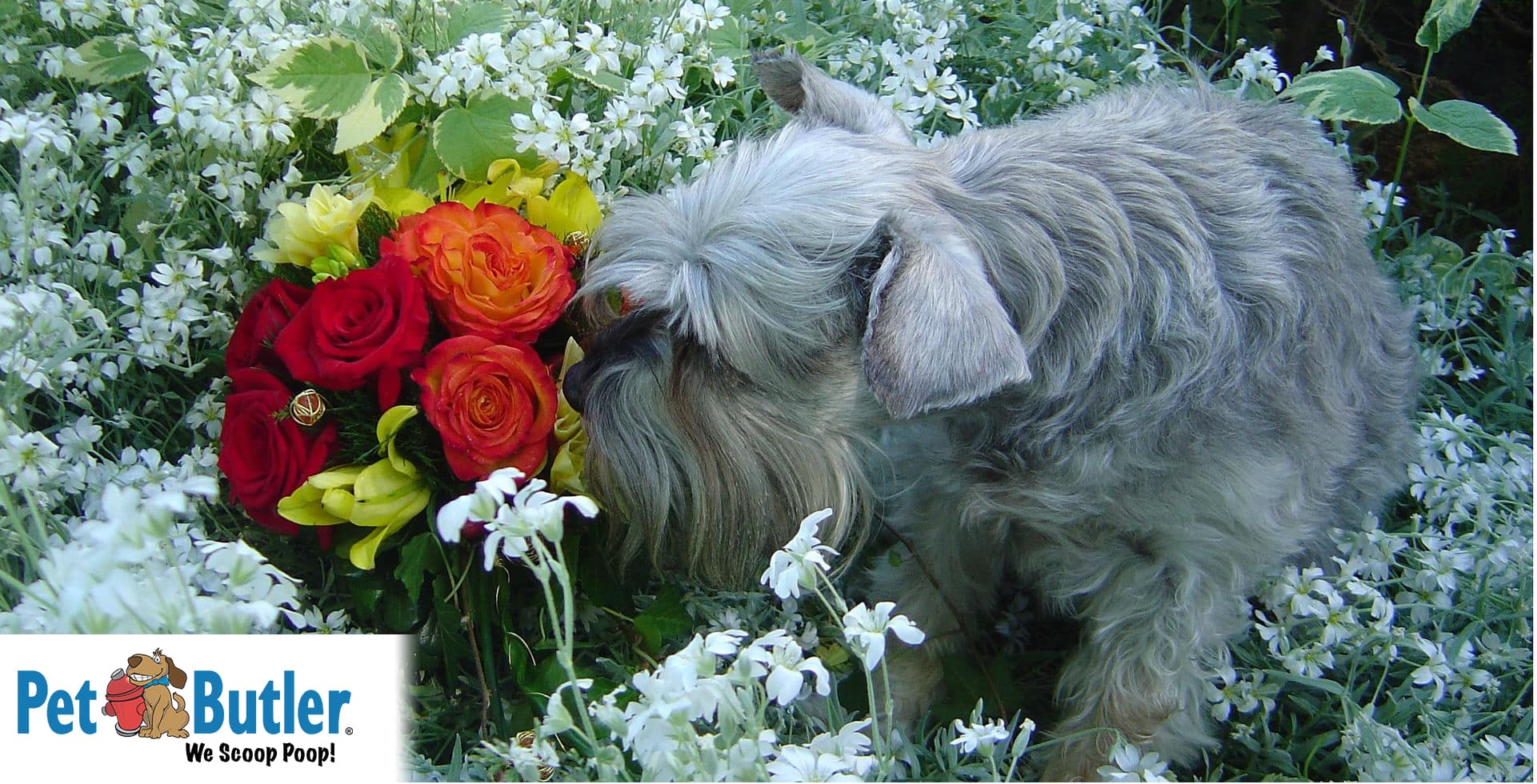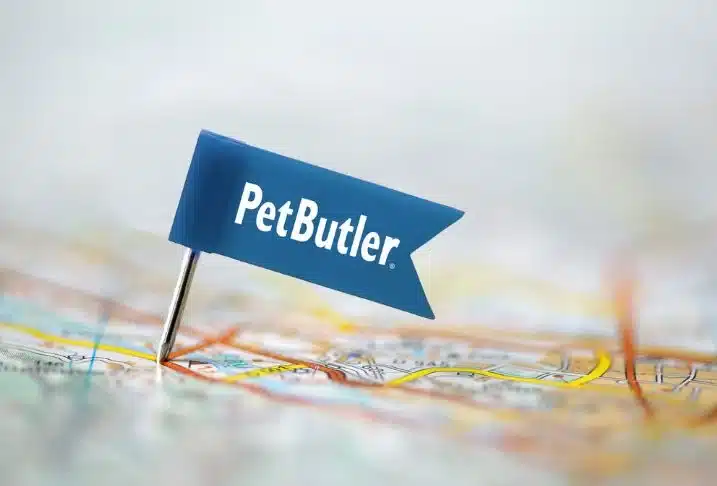With spring weather finally cooperating and hitting warmer temperatures throughout the United States, it’s time to get annual plants in the ground. Like most of you, part of the season I enjoy most is throwing the ball to my dogs in the yard and watching them get taunted by the squirrels. We are fortunate to have areas dedicated to annual flowers, perennial shrubs, and an edible garden. Unfortunately, some of the plants I enjoy watching bloom can be toxic to dogs and it pays to consider which flowers and plants you have in the garden this spring season.
Treatment if Toxic Plants Are Ingested
Below follows a list of the most common dangerous plants and flowers that dogs shouldn’t eat and what signs and symptoms may be present if consumed. We will cover a dog first aid kit in a future article, but it always makes sense to have a bottle of dawn dish soap, Hydrogen Peroxide, as well as a bottle of saline to rinse the eyes and the mouth if an irritant is introduced. After administering hydrogen peroxide, vomiting typically ensues within 10 minutes. This may mitigate some of the more harmful effects of the poisonous plant. That being said, always consult your veterinarian or the ASPCA Animal Poison Control Center at their 24-hour emergency number, (888) 426-4435. Sometimes the damage of an irritating substance coming up can do as much or more damage than the item going down.
Currently, a $65 charge per case is applied to a credit card, but their expert advice may just save your dog’s life. It should also be noted that consuming any vegetation can cause gastrointestinal signs such as vomiting and diarrhea and may be dose related. This seems counter-productive as many dogs will eat grass to soothe an upset tummy but tell that to your pup! Some of the spring flowers you should avoid planting can cause almost immediate effects. Others take hours for their toxic chemicals to produce symptoms.
Plants & Flowers Poisonous to Dogs
Edible Garden
Onion or Allium family: This includes garlic bulbs, chives, leeks, and flowering alliums. They contain a chemical called N-propyl disulfide which is concentrated in the plant bulbs.
Clinical Signs: Vomiting, breakdown of red blood cells, blood in the urine, weakness, high heart rate, panting
Citrus Fruits like Lime: Contain Essential oils and psoralens
Clinical Signs: Vomiting, diarrhea, depression; potential dermatitis or skin irritation. Fruit is edible, skins and plant material can cause problems
Tomato Plant (leaves, unripe fruit) and Nightshade: Contains Solanine
Clinical Signs: Hypersalivation, inappetence, severe gastrointestinal upset, depression/drowsiness
Macadamia Nuts: toxin unknown
Clinical signs: depression, weakness (especially of rear limbs), vomiting, tremors.
Marjoram, Thyme, and Mint: Contains Essential oils
Clinical Signs: depression, weakness (especially of rear limbs), vomiting, tremors.
Apples, plums, cherry trees: Stems, leaves, seeds contain cyanide, particularly toxic in the process of wilting
Clinical signs: brick red mucous membranes, dilated pupils, difficulty breathing, panting, shock.
Non-Edible Garden
Foxglove or digitalis: Among the most toxic of plants in the flower garden containing Cardiac glycosides
Clinical Signs: Heart arrhythmias, vomiting, diarrhea, weakness, cardiac failure, death.
Daisies and anything in the chrysanthemum family: Contain Sesquiterpene, lactones, pyrethrins and other potential irritants
Clinical Signs: Vomiting, diarrhea, hypersalivation, incoordination, dermatitis
Ivy, any variety: Contain Triterpenoid saponins (hederagenin)
Clinical Signs: Vomiting, abdominal pain, hypersalivation, diarrhea. The leaves are more toxic than berries
Geraniums: Geraniol, linalool are the toxins present
Clinical Signs: Vomiting, anorexia, depression, dermatitis
Hellebore or Christmas Rose: Bufadienolides, glycosides, veratrin and prtoanemonin are some of the toxins
Clinical Signs: Drooling, abdominal pain and diarrhea, and depression
Hostas: Part of the Lily family. Saponins cause symptoms.
Clinical Signs: Vomiting, diarrhea, depression.
Lily of the Valley: Cardenolides (convallarin, and others)
Clinical Signs: Vomiting, irregular heartbeat, low blood pressure, disorientation, coma, seizures
Coleus: Essential Oils
Clinical Signs: Vomiting, diarrhea, depression, anorexia, occasionally bloody diarrhea, or vomiting
Irises: Pentacylic terpenoids (zeorin, missourin and missouriensin) are highly concentrated in the rhizomes.
Clinical Signs: Salivation, vomiting, drooling, lethargy, diarrhea.
Rhododendrons: Ingestion of a few leaves can cause serious problems due to Grayantoxin.
Clinical Signs: Vomiting, diarrhea, hypersalivation, weakness, coma, hypotension, nervous system depression, cardiovascular collapse, and death.
Burning bush: Contain alkaloids
Clinical Signs: Vomiting, diarrhea, abdominal pain, weakness. Heart rhythm abnormalities with large doses.
Black Walnut found most often in mulch:
Clinical Signs: moldy nuts/hulls can cause tremors and seizures, ingestion of shavings can cause incoordination
Yew: Contains Taxine A and B, and volatile oils
Clinical Signs: Tremors, difficulty breathing, vomiting, seizures (dogs), sudden death from heart failure.
Yarrow: Achilleine and alkaloids.
Clinical Signs: Increased urination, vomiting, diarrhea, dermatitis.
Tulips and daffodils: While we are seeing the beautiful spring flowers, their planting season is actually in the fall. The bulbs deep in the ground contain the most harmful part of the plant. So, while the flower itself is not dangerous, use caution when planting throughout the year.
Clinical Signs: vomiting, depression, diarrhea, and hypersalivation; large amounts cause convulsions, low blood pressure, tremors, and cardiac arrhythmias.
Don’t let the laundry list of scary flora deter you from enjoying the garden with your dog. The following is a list of vet-approved plants. See you outside!
Alyssum, Squash, Impatiens, Baby’s Breath, Basil, Blue Eyed Daisy, Chickens and Hens, Cinquefoil, Cilantro, Snapdragons, Coreopsis, Cornflower, Day Lilies (toxic to cats), Ferns, Marigolds, Asters, Red Maple, and Zinnias.

